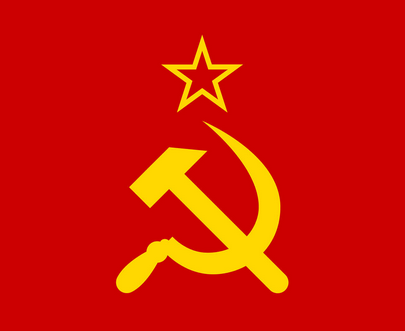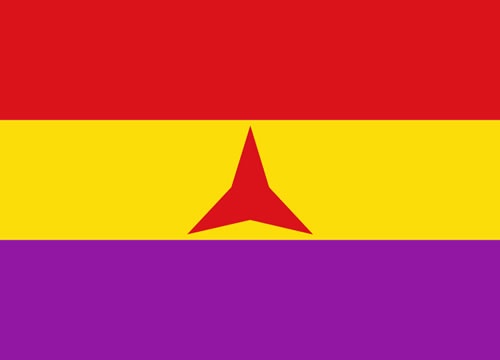Im doing an alternate history scenario with a friend and this is my map for 1980. I wanted some fresh eyes to look at this and give some history changes.
the only relavent alteration of history i have here is that I changed the result of the Ecuadorian elections which made it less dependent on the USA.
West Europeans and Japan and Australians (and Canadians) not being labeled as vassals is inaccurate, but depends on your audience if they’ll fixate on screeching about that (real reality) instead of the broader picture youre trying to paint. US literally occupied the continent and Gladio’d everyone but friendlies by using all the nazis they hired into West German intelligence (and every other W. German government and social institution) and their collaborator networks, in collaboration with the (fascist) Vatican and also a bunch of mafia figures. Then subsumed the Europeans’ individual militaries in large part into NATO which is blatantly led by the USA. Vassals.
When Australia tried to close US military bases and kick out the CIA the US collaborated with the UK to coup their government, including by having the Queen leverage her absolute powers. Vassal. Japan was bombed to shit and then militarily occupied by the US; and after the US-led government let the (those still-unexecuted) communists out of prison and used them to rebuild the country — which made them very popular — when the communists were going to handily win in a democratic election (which would likely too have meant removal of US military occupation) MacArthur literally stepped his boot down and abolished their election until the communists could be ousted — and initiated a heinous purge and white terror against the communists and splitting the communist movement in half between those who would capitulate and those who sought protracted peoples war in response. Vassal.
Yeah, i had a some difficulty trying to quantify US vassalage. For canada I put them under NATO since it would be an Imperial Core country (despite US vassalage). I know the history you point out, but i will say that japan in the 80s was more economically independent from the US, to an extent where america had to take drastic action to wrestle it under control.
As @thelastaxolotl@hexbear.net pointed out, OECD is a more exact representation of the imperial core countries than just trying to do my previous system, so I will be changing the way the imperial core is represented.
South Africa and Turkey being ‘west’? nah. China & Mexico being the same ‘nonaligned’ color? nah
I mean, Turkey is a part of NATO and a vital part of western capitalism’s warmongering against the soviet union, and south africa is a white favoring apartheid state in league with western capital.
what do you suggest for a ‘non-aligned’ section? Im not doing a hyper in depth map but something more general. Its specifically about alignment with the Soviet Union or USA
south africa is a white favoring apartheid state in league with western capital
the yankees and euroimperialists were at best ambivalent, and eventually assented to embargoes on them. south africa is definitionally marginal since the suez canal was dug, there wasn’t a strategic reason to back the boers. much easier to throw your domestic left a bone and sternly reprimand it.
what do you suggest for a ‘non-aligned’ section?
that China & Mexico aren’t in it. China was working toward their own constellation of affiliate movements, Mexico was comprador in the 80s
i think you should show the (NAM) non aligned movement members as independents or just nonaligned instead, since all of africa were members some countries of different sides were also members and Mexico was just an observer.
Since you used the Comecon as the soviet faction, instead of west you could use the OECD since by 1980 its made up by most of the countries of the west plus Japan
I was thinking that, but a co-creator definitely put it as a priority to highlight, so yeah i may just put it into perspective as ‘Independent’ or ‘non-aligned’ countries. I tried to make the section also reflect that, since its for countries that are split between east and west, or are truly more independent.
I admit i was blind to the existence of the OECD but god its perfect! the international community is perfectly outlined, and the puppets of empire as well. I will recommend these changes.
thank you for your recommendations
The category selection is the big flaw honestly. You have firm agreements and alliances, but then vague things like “west”, also ignores that NAM can be more firmly in one block or another. Like Somalia is closest to China and the US, while explicitly calling itself ML in 1980. I think you need to settle on alliances/agreements, or the general ideological views of the countries.
For instance India was economically very much Soviet-aligned but also not socialist and had a shitload of close ties to the West with open access for western companies. Geopolitically it is complicated. Ideology of ruling party is probably best.
If nothing else define your terms. Like I am unsure what co-operative nations is supposed to mean, especially given the ones marked as such.
edit: another thing that stuck out is the People’s Republic of Kampuchea being listed as friendly. It was at this time still in a civil war, but with the capital and much of the nation under Vietnamese oversight, arguably a Vietnamese vassal (not in the harsh sense, but like Eastern Germany until the late 50s) especially right after securing the nation.
For instance India was economically very much Soviet-aligned but also not socialist and had a shitload of close ties to the West with open access for western companies. Geopolitically it is complicated. Ideology of ruling party is probably best.
this means kinda little, like just because a country calls itself ‘socialist’ it can easily still be tapped into western capitalism (Guyana, Somalia, and Egypt). Im trying to define them between two particular blocs of power. Pol Pot was a ‘maoist’ but entirely western and chinese backed.
If nothing else define your terms. Like I am unsure what co-operative nations is supposed to mean, especially given the ones marked as such.
I had trouble defining certain levels of alignment. Whether foreign policy leaned more soviet or american. I should probably make china an American ‘ally’ but in this timeline they dont cooperate with the west to fund the mujaheddin (i think i havent written it down specifically). Basically the darker a color, the more aligned to a bloc your country is.
edit: another thing that stuck out is the People’s Republic of Kampuchea being listed as friendly. It was at this time still in a civil war, but with the capital and much of the nation under Vietnamese oversight, arguably a Vietnamese vassal (not in the harsh sense, but like Eastern Germany until the late 50s) especially right after securing the nation.
good, i know that, vietnam is a COMECON member and a close ally of the soviet union. Thus the vassal of vietnam is soviet aligned.
India was not calling itself socialist, my point is that in terms of regional geopolitics it was VERY much Soviet-aligned. It used a lot of Soviet military hardware, it trained with the Soviets, the USSR supported India’s foreign policy decisions like with the Bangladeshi War of Independence to the point of sending a fleet to confront the Brits and Americans over their attempt to stop Indian involvement, one of the breaking points of the Sino-Soviet split was the USSR staying neutral during the '59 border conflict of China and India, the USSR was sending more aid of all kinds to India by 1960 than it ever had to China including MIGs which China never got and had to design their own copy of, etc.
That is not even getting into all the more civilian diplomatic connections and inter-leader relationships. Suffice is to say, India is firm Soviet aligned regardless of ideology. https://online.ucpress.edu/as/article-abstract/7/3/165/24092/India-and-the-USSR-The-Post-Nehru-Period?redirectedFrom=fulltext
If you want to make the key for the map gradients of two blocs then it has to factor for some countries being literally NAM members, but further into one bloc than “allies” and “friendly” countries may be. I would recommend the game China: Mao’s Legacy for its starting map in late 1979, it has shades for ideology, as well as a map mode for economic membership and military alliances. I don’t agree with every single choice, but it is a really good indicator of the blocs at this exact moment. Like you really can’t talk 1980 without China as its own bloc if you are going by blocs or spheres of influence over membership, then Bangladesh for sure is not a co-operative nation. By this point it was swinging right, removing socialism from the constitution, leaving the Indo-Soviet Bloc, and strengthening ties with the West and strong military ties with China. If color marks closeness, then India has to be more redish than Bangladesh.
Myanmar is another case that stands out for its particular distance from the Soviet bloc. As you said, calling yourself socialist does not determine the nature of a country. Myanmar at this time was still led by Ne Win who at this point was not even trying to work with the Socialist Bloc. There is a paper from 1981 that questions and determines that Burma was not even attempting a socialist society and was mostly vestigial in its definitionally socialist economy (IE a command economy). https://www.sciencedirect.com/science/article/abs/pii/0305750X81900437?via%3Dihub
Our analysis of the Burmese experience leads us to conclude that Burma does not have a socialist economy nor does the leadership have the ability or will necessary to build a socialist society.
Burma had just entered back into real relations with China again after the anti-Chinese pogroms in '67, with diplomatic relations not restored until 1970, in the wake of the 1979 NAM conference which they felt was controlled by Cuba and the USSR. So hostile to the USSR since the 60s, hostile to China since the 60s and only now pivoting to China after having already begun to swing to the West for a while. Burma is one such country that fits in either a Chinese bloc or has to be NAM even though at your start date it just left.
While an outright state dept mouthpiece, the wilson center’s american POV of this dynamic is actually a good tool for at least how the US foreign policy hawks viewed Myanmar’s place in all this https://www.wilsoncenter.org/publication/reassessing-china-myanmar-relations-during-the-cold-war
Peru was under control of Gen. Francisco Morales Bermúdez, he had removed Center-Left nationalist dictator Velasco from power and worked with the US during Operation Condor. I think it should be marked as Allies.
he had removed Center-Left nationalist dictator Velasco
How was Velasco? Seems quite contrare to other rightist caudillos like him…
I believe that Velasco was a representative of the left wing of the Peruvian Armed Forces at the time. He took office in a bloodless coup d’état because Peru was suffering from political instability, the Congress was under the control of the extreme right. The executive was under the control of a weak and useless liberal, in addition to the existence of communist and socdem guerrillas (APRA Party).
The army decided that enough was enough and, fearing that there would be a far-right party in coalition with the APRA government in Peru, which would lead to greater political instability, they staged a coup d’état and ousted the President. During his rule, he was pro-Inca and pro-Native, granting a series of rights and changing the names of things to indigenous names. He also established Quechua as one of Peru’s official languages. This process was called Peruanism. He also carried out the largest land reform in South America (second only to Cuba in Latin America). He nationalized the economy, the government took over many things.
He began to have better relations with Cuba, even though his government was anti-communist and persecuted socialists, liberals, conservatives and communists. He started buying things from the Soviet Union and Cuba to prepare for a possible invasion of Pinochet’s Chile. He also didn’t like the US and tried to gain a lot more independence from the US. What really screwed Velasco up was the oil crisis of the 1970s, which made it impossible for Velasco to continue his revolution and eventually opened up the opportunity for the right-wing members of the army to depose him.
Btw, Bolivia also had their very own Center-Left Military strongman (1969 - 1971), Gen. Juan José Torres (nicknamed Jota-Jota) who kicked the Americans out of Bolivia, and later he was removed and killed by the CIA.
To give a vibes based comparison, he was Hispanic Nasser in terms of alignment
thank you, i forgot about the 75 coup
I wouldnt say that the swiss were US during this time, more like vassals - Austria was deffo The West. By the 80s Sweden was subjugated as well.
Not having a category for Iran is kinda weird especially since it stands out pretty well on the map. Just call them Shiaism or something.
na sharghi na gharbi jomhori-e-eslami!!
eh, its more about cold war alignment between blocs






